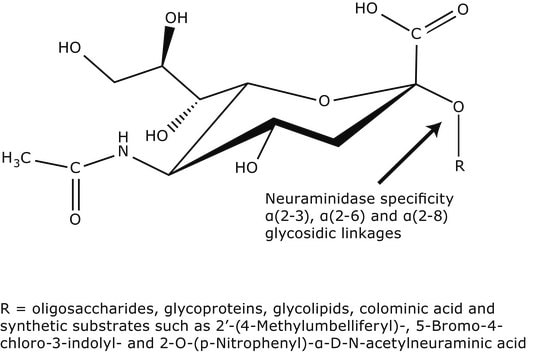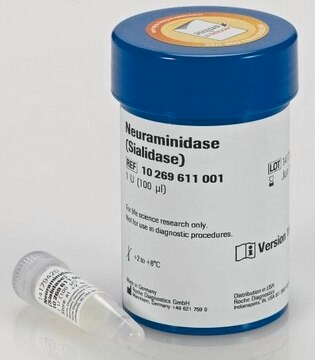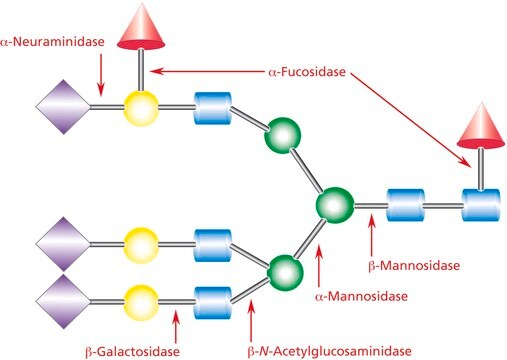N2133
Neuraminidase from Clostridium perfringens (C. welchii)
Type X, lyophilized powder, ≥50 units/mg protein (using 4MU-NANA)
Sinónimos:
Acyl-neuraminyl Hydrolase, Receptor-destroying enzyme, Sialidase
About This Item
Productos recomendados
type
Type X
Quality Level
form
lyophilized powder
specific activity
≥50 units/mg protein (using 4MU-NANA)
storage temp.
−20°C
Gene Information
Clostridium perfringens str. 13 ... nanI(988807)
¿Está buscando productos similares? Visita Guía de comparación de productos
General description
Application
Biochem/physiol Actions
Unit Definition
Preparation Note
Analysis Note
signalword
Danger
hcodes
pcodes
Hazard Classifications
Resp. Sens. 1
Storage Class
11 - Combustible Solids
wgk_germany
WGK 1
flash_point_f
Not applicable
flash_point_c
Not applicable
ppe
Eyeshields, Gloves, type N95 (US)
Elija entre una de las versiones más recientes:
¿Ya tiene este producto?
Encuentre la documentación para los productos que ha comprado recientemente en la Biblioteca de documentos.
Los clientes también vieron
Protocolos
Enzymatic Assay of Neuraminidase applies to products that have a specification for neuraminidase content by enzymatic determination.
Nuestro equipo de científicos tiene experiencia en todas las áreas de investigación: Ciencias de la vida, Ciencia de los materiales, Síntesis química, Cromatografía, Analítica y muchas otras.
Póngase en contacto con el Servicio técnico











